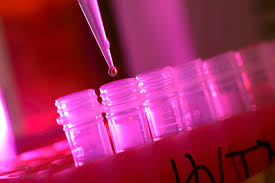There’s new word of major advancements in the field of medical vaccination. The Janssen Pharmaceutical-based in Belgium and owned by Johnson & Johnson, have reached phase 3 trials of a prototype vaccine against HIV virus.
It is the first vaccine, in more than a decade, that goes so far in the case of the Human Immunodeficiency Virus, discovered in 1981 and whose associated disease was officially baptized in 1982 as Acquired Immunodeficiency Syndrome (AIDS) (Acquired Immune Deficiency Syndrome, AIDS).
The purpose of Janssen’s vaccine is preventive, that is, it protects against the transmission of the virus that causes AIDS.
The medical trial will last from 24 to 36 months to verify the permanence and intensity of the protection. The previous attempt to obtain a vaccine against HIV ended in 2009, when it was found that the previous vaccine prototype only prevented 30% of infections.
The technology that Janssen has used in its HIV vaccine is the same as that used in your coronavirus vaccine, which is also in phase 3 of trials: “an adenovirus modified so that it transports the DNA of its most representative proteins into the cells of the subject so that the individual’s body creates antibodies against them,” according to the newspaper. The country.
Antonio Fernández, a researcher at the pharmaceutical company, told the aforementioned media that there are actually two vaccines, one encoded with three proteins and the other with four, which because they have this mixture are called mosaic.
Both have passed safety studies and have been found to create antibodies, according to an article published in the specialized journal The Lancet, although it remains to be seen how it works in real conditions.
José Moltó, doctor of the Foundation for the Fight against AIDS, explained that the delay in getting a vaccine is because HIV has “tremendous variability”.
Specifies that “when pressed [por las células del sistema inmune] it changes its external appearance and escapes ”. What the vaccine that is now in phase 3 trials does is that it “targets different variants of the gag, pol and env proteins of the virus, which makes it more difficult for it to evade the action of the antibodies created.”
Moltó explains that It is similar to what happened 25 years ago with antiviral treatments, which were effective when several were combined that interrupted the virus’s replication cycle. The success of these treatments resulted in less talk about HIV and AIDS.
However, Spanish scientists calculate that 12 of the 38 million people living with the virus in the world do not receive treatment.
The success of current treatments means that one pill a day keeps the virus under control and reduces it so much that the infected person cannot transmit it to another, however, their success has also slowed down research for a vaccine.
In addition to antiviral therapy for those who already have the virus, there is also the so-called pre-exposure prophylaxis (Prep), a pill that protects against HIV if taken before unprotected intercourse.
On the success of the Janssen vaccine, the researchers estimate that everything will depend on the efficacy and regimen of the vaccine. If it is possible to make it work with one or two pricks for life or every five years, “it will be more comfortable and more applicable to the population of poor countries,” argues the Spanish doctor.
It is estimated that a lower cost than current antiviral treatments can facilitate the application of the vaccine to people where there is even a shortage of drinking water to take a daily pill. This is the case of the African continent, which represents more than 40% of new HIV infections in the world, according to WHO data.
The World Health Organization estimates that some 38 million people were HIV positive worldwide at the end of 2019. Of which 36.2 million are adults and 1.8 million children (up to 14 years).
Since the peak in 1998, new HIV infections have been reduced by 40%. There were 1.7 million new HIV infections in 2019, compared to 2.8 million in 1998. In terms of deaths, since the peak in 2004, AIDS-related deaths have fallen by more of 60%. In 2019, around 690,000 people died of AIDS-related illnesses worldwide.
Cuba has registered 35 thousand people infected with HIV since the disease was detected on the island in 1985. In these 35 years, 9,244 people have died in Cuba from this cause, at the rate of an average of 264 per year.


COMMENTS